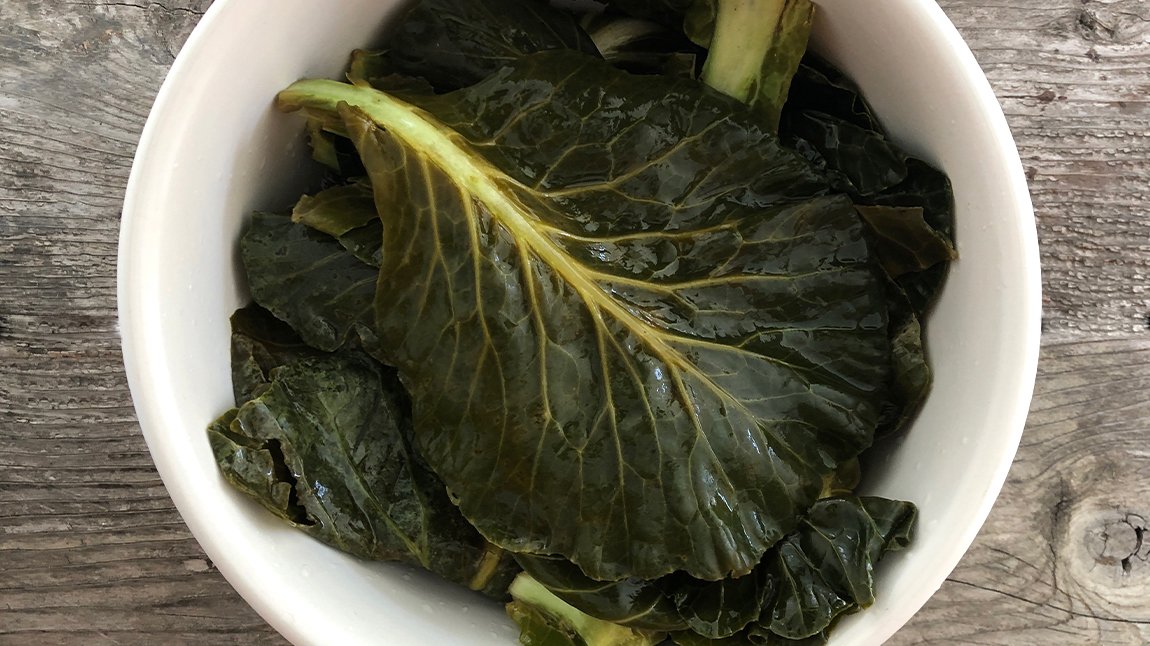
Photo by Andrea Weigl
From Vivian Howard’s cookbook, “Deep Run Roots,” (Little, Brown & Co., 2016). Vivian wrote:
This recipe calls for four pounds of collards, weighed after the large end stems have been removed. You can make as much or as little kraut as you like as long as you measure one-third cup of kosher salt for every two quarts of water. The method, not the size of the batch, is important here. To make the kraut, you’re going to need a very clean vessel, a weight, and a lid. In this recipe I use a stockpot, its lid, and a zip-lock bag full of brine as a weight.
Begin by washing your collards and your vessel very well. Pack the collard leaves down into the bottom of your pot a few leaves at a time. Press them firmly with a potato masher or pestle after each layer. The goal is to bruise the leaves but also to pack them as tightly in the vessel as possible. Once you’ve packed all the collard leaves in there, mix the water and salt and pour the brine over the top. The collards should be submerged by 2 inches.
From this point forward, it’s incredibly important that no collards see the light of day. They must be submerged in the brine throughout the entire fermentation process. To do this, pour the remaining brine in a gallon zip-lock bag and put that bag on top of the collards. The weight of the bag should keep the collard greens below the surface of the brine. If not, fill another bag with brine and place it on top of the first bag. Cover the vessel with a cheesecloth or a towel, and secure that cover so it doesn’t fall off or in. Then cover your stockpot loosely with its lid.
Store the kraut at room temperature (70 degrees is ideal) away from direct sunlight for about 3 weeks. Check on it periodically and skim off any scum that rises to the top. It will begin to smell and bubble, and well, ferment after about 5 days. At the end of a month, transfer the kraut to a refrigerator, where it should keep for up to 6 months submerged in its brine.
I like to eat it rinsed and raw on burgers, avocado toast or with barbecue. Believe it or not, it’s quite versatile.